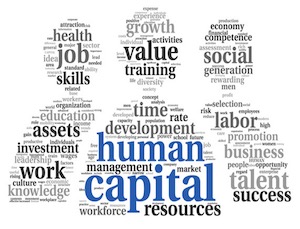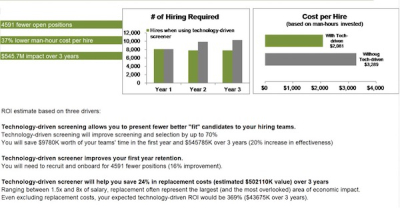HUMAN CAPITAL AS A COMPANY ASSET: APPLYING UTILITY ANALYSIS

There are fundamental shifts taking place in Human Resources management.
It’s no surprise that technology-enabled analytics has permeated every area of the business process. Using sophisticated techniques, operating, marketing, sales and financial professionals have been able to optimize their processes to improve efficiencies and positively impact bottom line financial performance.
The most recent function to benefit from the rigor of data analytics is the Human Capital function. A recent article in HR Executive Magazine reported that 60% of the Fortune 100 companies had people analytics professionals on staff. What makes data analytics more complex in the HC area is that individuals are unpredictable, and therefore their behavior (and predictions about their behavior) is hard to forecast with reliability. What we can measure, though, is how the collective of all employees and the costs associated with employees and employee programs impact financial performance. Given that HC costs are typically a company’s largest line-item expense, applying an analytics approach should be a high priority.
Recently, the SEC determined that human capital should be viewed as an intangible asset rather than an expense to the organization. Although we will continue to see HC expenses on P&Ls and cannot expect soon to see HC as an asset on the balance sheet – we will begin to see organizations acting on the recognition that human capital is an intangible asset and certain expenses ought to be reclassified as investments for planning, accounting and tax purposes. We’ll write more on the accounting and tax aspects of the distinction in another article.
This also opens the door to using more advanced approaches to prioritize and inform investment decision-making related to HC. Utility analysis is a method to understand the cost/benefit impact of any business investment, typically one in physical assets, R&D and the like. We suggest that the same analysis can be applied to Human Capital decisions as well, applying the same level of rigor and resource allocation analysis as one would to an investment in any other asset.
Thinking of Human Capital as an asset to be invested in can facilitate HC-related spending decisions. The challenge is determining, with reliability and validity, the measures of cost and “value” (or benefit) derived from each activity/investment undertaken by the firm.
A REAL-WORLD EXAMPLE
Let’s see how this worked in a real business situation. Here’s a case study from a client who was seeking to quantify the return on an investment in a recruitment software product. Having identified the recruitment function as an area for improvement, we quantified current performance:

Then we estimated the improved efficiency of the recruitment process using the proposed software product.

Lastly, we quantified the financial return on the proposed investment. As you can see, there was a high level of “utility” in the proposed investment.

Conclusion:
Thinking about Human Capital as an asset of the organization allows for solid analysis to be done in considering investments – not in terms of resources that “walk out the door at night” but in terms of return on investments.
Almost every Human Capital process and human resources program can be evaluated using the bottom-line-focused rigor of utility analysis – to inform investment decisions. Future employee-focused programs and processes should be viewed through this “utility” filter and offer insight by focusing on the success of a specific program against its stated goals (benefits, training, recruitment, bonuses, and more) and contribution to economic value creation.
Footnote: Solange created HCMoneyball as a first of its kind solution designed to capture and report on much of the data needed to address the above questions and reveal the efficiency and impact of all HR programs.
Identify your path to CFO success by taking our CFO Readiness Assessmentᵀᴹ.
Become a Member today and get 30% off on-demand courses and tools!
For the most up to date and relevant accounting, finance, treasury and leadership headlines all in one place subscribe to The Balanced Digest.
Follow us on Linkedin!
